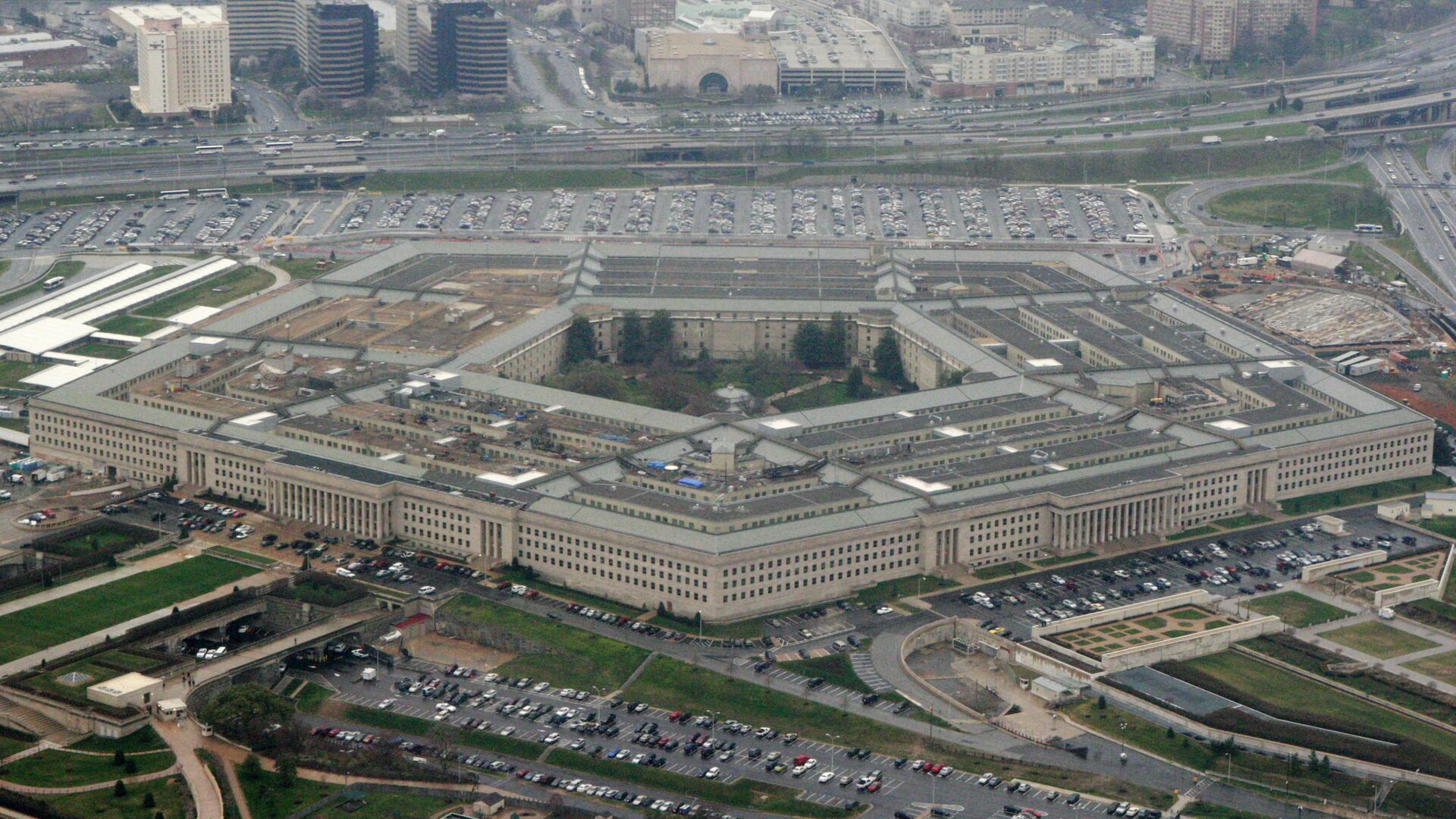https://sputnikglobe.com/20231219/us-military-taps-use-of-microwave-weapons-to-neutralize-drone-threats-1115687613.html
US Military Taps Use of Microwave Weapons to Neutralize Drone Threats
US Military Taps Use of Microwave Weapons to Neutralize Drone Threats
Sputnik International
US warnings of microwave weapons used to attack diplomatic personnel in Havana have been shown to be another case of Western projection as the Pentagon admits to its own development of the novel technology.
2023-12-19T22:09+0000
2023-12-19T22:09+0000
2023-12-19T22:05+0000
military
us
us military
military technology
military & intelligence
pentagon
raytheon
houthi
ukraine
havana
https://cdn1.img.sputnikglobe.com/img/07e5/07/06/1083320993_0:46:3477:2002_1920x0_80_0_0_43e029dba9d2d4053d0b0d47dafd9a08.jpg
US warnings of microwave weapons used to attack diplomatic personnel in Havana have been shown to be another case of Western projection as the Pentagon admits to its own development of the novel technology.The news was announced Tuesday in US media as drone attacks from smaller adversaries increasingly change the dynamics of warfare internationally. Most recently, Houthi fighters in Yemen have used suicide drones to attack ships in the Red Sea as the country attempts to enforce a blockade against Israel. Drones have also seen use by both sides in Russia’s special military operation in Ukraine.The swarms can be attacked with missiles, but that strategy is costly – far more costly than the drones themselves. Pentagon planners hope to find a cheaper way to neutralize the threat.Ken Bedingfield, finance chief at L3Harris Technologies, agreed that the increasing use of drones has created a sense of urgency. “We’ve arrived at a bit of a moment,” said the representative of the weapons manufacturer.As the United States announces a multinational effort to address the Houthis’ effective blockade, RTX (the parent company of Raytheon) announced Tuesday the US Navy has ordered two new microwave directed energy weapon systems to knockout airborne targets."Raytheon, an RTX business, will design, build and test two high-power microwave antenna systems that will use directed energy to defeat airborne threats at the speed of light," read a release from the company.Weapons manufacturing has seen large-scale privatization in the United States since the 1940s. Military contractors often attempt to sell the Pentagon on exotic and expensive new weapons programs that boost private manufacturers’ profits, but some have questioned whether the strategy creates an optimally-functioning military. Ukraine’s broad failure amidst Russia’s special military operation in the Donbass has put the effectiveness of US weapons systems in doubt.Meanwhile, Russia has managed to leapfrog the United States in some crucial next-generation technologies, as when the country recently demonstrated the use of hypersonic weapons.Paul Head, the director of Next Generation technologies at Raytheon, concedes that microwave weapons probably wouldn’t completely disable large swarms of drones. But he and other war contractors hope they can sell the Pentagon on the technology as part of a “layered” approach to responding to the threat.“If I have 20 incoming threats, and even if my high-power microwave can only address half of those, that’s 10 less threats that we now need to deal with,” said Head.Earlier this year, the US Air Force tested the Thor system to disable drones, a technology in development for several years. Lockheed Martin is testing a system they dub “Morfius” which is carried by a drone and aims to attack from short range.The US insisted foreign powers had cracked the code, claiming diplomats at US embassies in Moscow and Beijing had been targeted with a terrifying but invisible new weapon. But evidence to prove the claims never emerged.The charge reappeared recently as US diplomats in Cuba complained of “Havana Syndrome,” but the Central Intelligence Agency was forced to admit that the strange symptoms were not caused by any foreign adversary. Some have suggested the claims may be caused by mass social contagion as US diplomats confront the guilt and cognitive dissonance of their country’s persecution of the small island nation.
https://sputnikglobe.com/20231218/austin-announces-multinational-operation-to-secure-read-sea-amid-houthi-attacks-1115669522.html
https://sputnikglobe.com/20230310/ferrets-primates-fall-victim-to-pentagon-experiments-to-replicate-havana-syndrome-1108271045.html
ukraine
havana
Sputnik International
feedback@sputniknews.com
+74956456601
MIA „Rossiya Segodnya“
2023
Sputnik International
feedback@sputniknews.com
+74956456601
MIA „Rossiya Segodnya“
News
en_EN
Sputnik International
feedback@sputniknews.com
+74956456601
MIA „Rossiya Segodnya“
Sputnik International
feedback@sputniknews.com
+74956456601
MIA „Rossiya Segodnya“
us military technology, us efforts to develop microwave weapons, how does us eliminate drone threats, us warfare efforts
us military technology, us efforts to develop microwave weapons, how does us eliminate drone threats, us warfare efforts
US Military Taps Use of Microwave Weapons to Neutralize Drone Threats
For now, the use of drone swarms gives smaller adversaries waging asymmetric war a unique advantage that US military contractors are working to counterbalance.
US
warnings of microwave weapons used to attack diplomatic personnel in Havana have been shown to be another case of Western projection as the Pentagon admits to its own development of the novel technology.
The news was announced Tuesday in US media as drone attacks from smaller adversaries increasingly change the dynamics of warfare internationally. Most recently, Houthi fighters in Yemen have used suicide drones to
attack ships in the Red Sea as the country attempts to enforce a blockade against Israel. Drones have also seen use by both sides in Russia’s special military operation in Ukraine.
The swarms can be attacked with missiles, but that strategy is costly – far more costly than the drones themselves. Pentagon planners hope to find a cheaper way to neutralize the threat.
“Directed energy, high powered microwave, low-cost interceptors is where we want to be,” said US Army Major General Sean Gainey last month at a meeting of the Center for Strategic and International Studies, a Washington think tank
funded by contributions from military contractors.
Ken Bedingfield, finance chief at L3Harris Technologies, agreed that the increasing use of drones has created a sense of urgency. “We’ve arrived at a bit of a moment,” said the representative of the weapons manufacturer.
As the United States announces a multinational effort to address the Houthis’ effective blockade, RTX (the parent company of Raytheon) announced Tuesday the US Navy has ordered two new microwave directed energy weapon systems to knockout airborne targets.

18 December 2023, 21:59 GMT
"Raytheon, an RTX business, will design, build and test two high-power microwave antenna systems that will use directed energy to defeat airborne threats at the speed of light," read a release from the company.
Under the three-year, $31.3 million contract from the Naval Surface Warfare Center Dahlgren Division, Raytheon will deliver prototype systems to the US Navy and US Air Force as part of the Directed Energy Front-Line Electromagnetic Neutralization and Defeat program, the release said.
Raytheon says the systems will be designed to be transportable and represent a “cost-effective and reliable solution” to the threat of drones. But the company doesn’t expect to deliver prototypes until 2024 and 2026, raising the prospect that drone warfare will remain an effective strategy for years to come.
Weapons manufacturing has seen large-scale
privatization in the United States since the 1940s. Military contractors often attempt to sell the Pentagon on exotic and expensive new weapons programs that boost private manufacturers’ profits, but some have
questioned whether the strategy creates an optimally-functioning military. Ukraine’s broad failure amidst Russia’s special military operation in the Donbass has put the effectiveness of US weapons systems in doubt.
Meanwhile, Russia has managed to leapfrog the United States in some crucial next-generation technologies, as when the country recently
demonstrated the use of hypersonic weapons.
Paul Head, the director of Next Generation technologies at Raytheon, concedes that microwave weapons probably wouldn’t completely disable large swarms of drones. But he and other war contractors hope they can sell the Pentagon on the technology as part of a “layered” approach to responding to the threat.
“If I have 20 incoming threats, and even if my high-power microwave can only address half of those, that’s 10 less threats that we now need to deal with,” said Head.
Earlier this year, the US Air Force tested the Thor system to disable drones, a technology in development for several years. Lockheed Martin is testing a system they dub “Morfius” which is carried by a drone and aims to attack from short range.
The United States has attempted to perfect concentrated microwave weapons for decades. When the 1960s “Starfish Prime” nuclear test in the Pacific damaged electrical systems in Hawaii, efforts intensified to find a way to harness the technology on the battlefield.
But developing a system that emits beams powerful enough to damage enemy electronics while remaining compact enough to be practical has proven challenging.
The US insisted foreign powers had cracked the code, claiming diplomats at US embassies in Moscow and Beijing had been targeted with a terrifying but invisible new weapon. But evidence to prove the claims never emerged.
The charge reappeared recently as US diplomats in Cuba complained of “Havana Syndrome,” but the Central Intelligence Agency was forced to
admit that the strange symptoms were not caused by any foreign adversary. Some have
suggested the claims may be caused by mass social contagion as US diplomats confront the guilt and cognitive dissonance of their country’s persecution of the small island nation.




